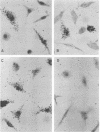Abstract
Peritoneal cells from starch-injected Swiss mice were propagated in plastic petri dishes and on cover slips in a mouse L-cell-conditioned medium for 12 to 24 h and then infected with various multiplicities of lactate dehydrogenase-elevating virus (LDV). Over 95% of the cells in these cultures phagocytosed latex particles and were, therefore, considered macrophages. Infected and mock infected macrophage cultures were supplemented with [3H]uridine at various times after infection and with actinomycin D 30 min before addition of the [3H]uridine. After 1 or 2 h of further incubation, plate cultures were analyzed for LDV-specific RNA, and cover slip cultures were investigated by autoradiography. Other cultures were labeled in the absence of actinomycin D, and the culture fluid was analyzed for labeled LDV. There was a good correlation between the production of LDV-specific RNA and LDV and the number of heavily labeled cells in these cultures. The labeled cells in these cultures. The labeled cells, therefore, were equated with productively infected cells. Only a maximum of about 20% of the macrophages, however, became heavily labeled regardless of the multiplicity of infection or the time, after infection, at which the cells were exposed to [3H]uridine. Only background labeling was observed in the remainder of the cells and in mock-infected cells treated with actinomycin D. The highest proportion of labeled cells was observed when the cells were infected with a multiplicity of infection of about 2,000 mouse infectious units per cell and labeled from 6 to 8 h after infection. Thereafter, the proportion of productively infected cells decreased progressively, concomitant with a decrease in the amounts of viral specific RNA and of LDV produced by the cultures. The results indicate that the majority of the macrophages in primary macrophage cultures do not support LDV replication. Their nonpermissiveness may depend on the physiological state of the cells or reflect the presence of subpopulations of macrophages, but no morphological differences between productively infected an uninfected cells were detectable.
Full text
PDF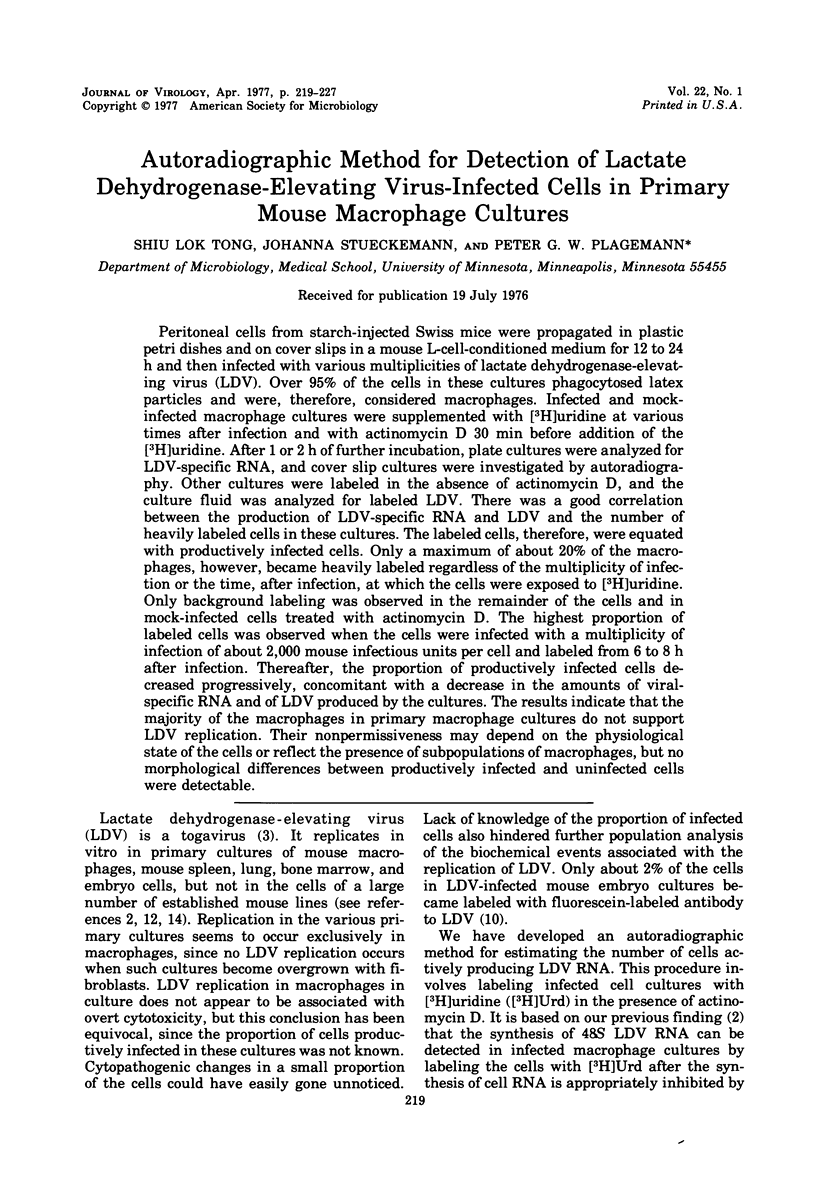
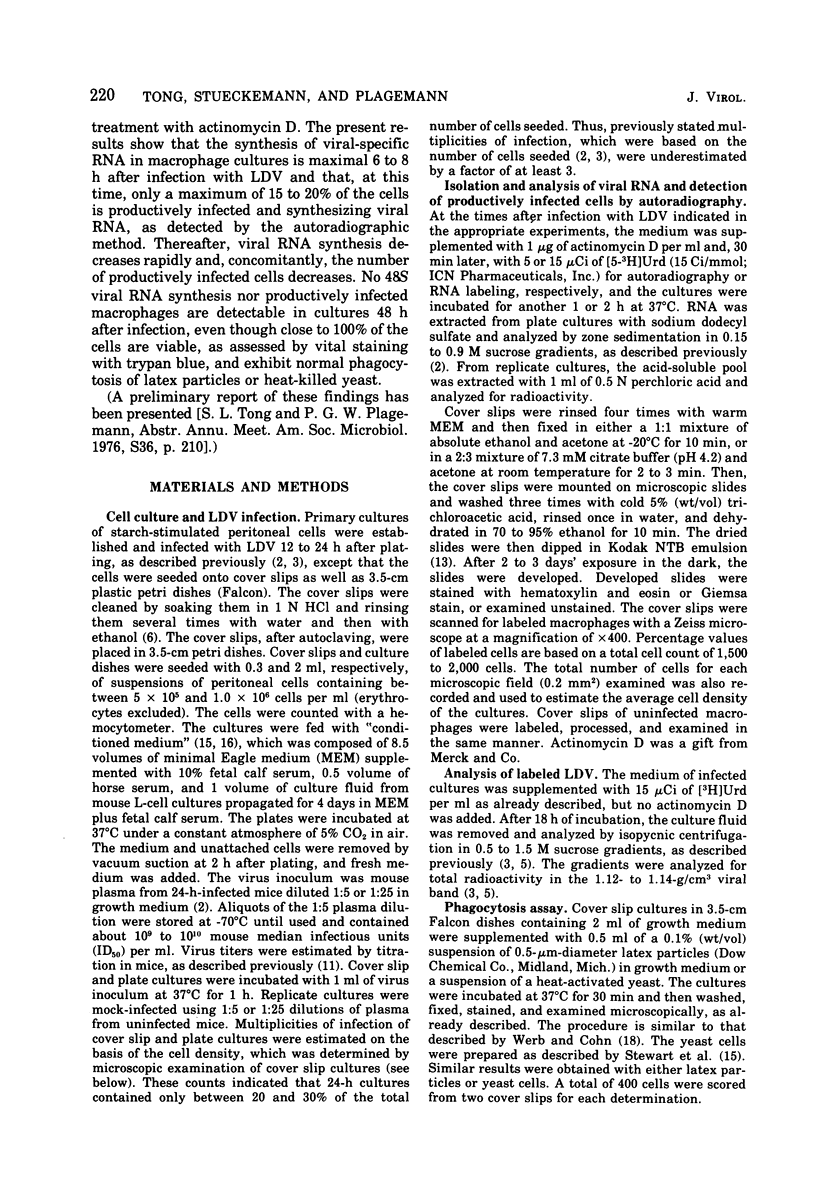
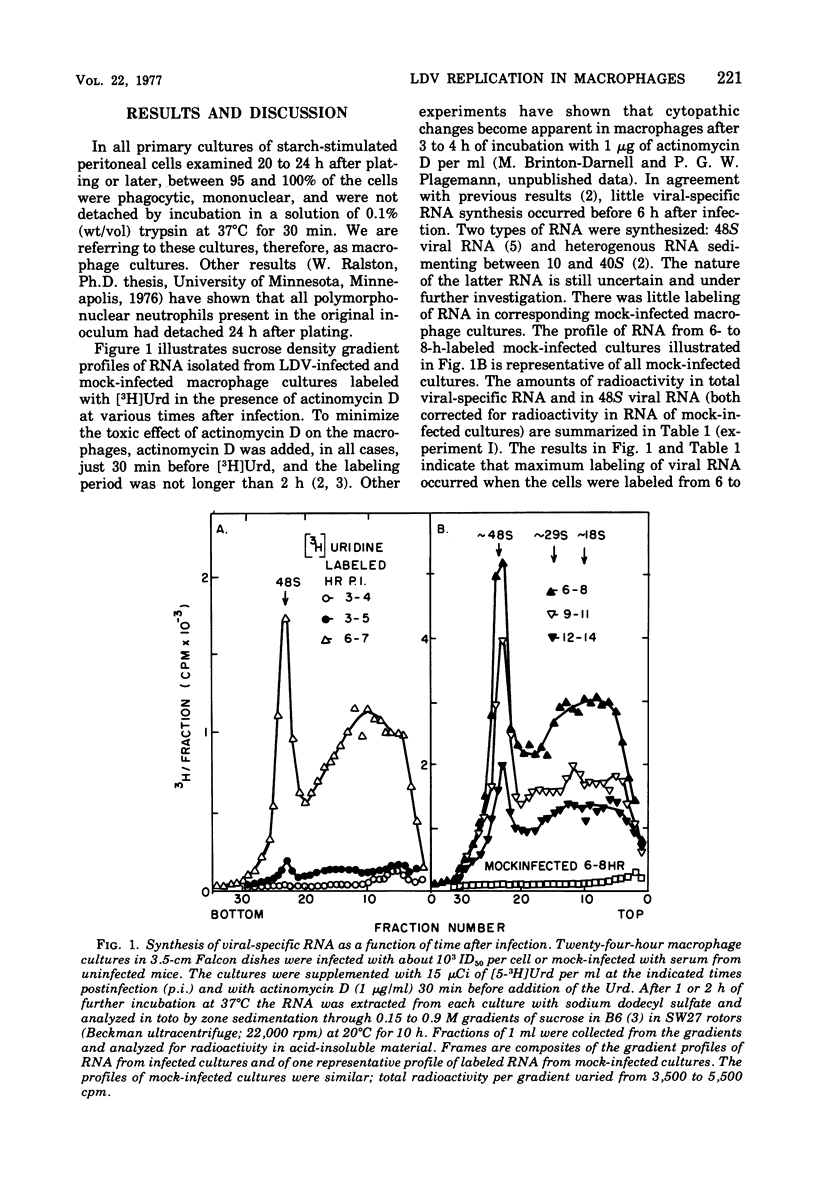
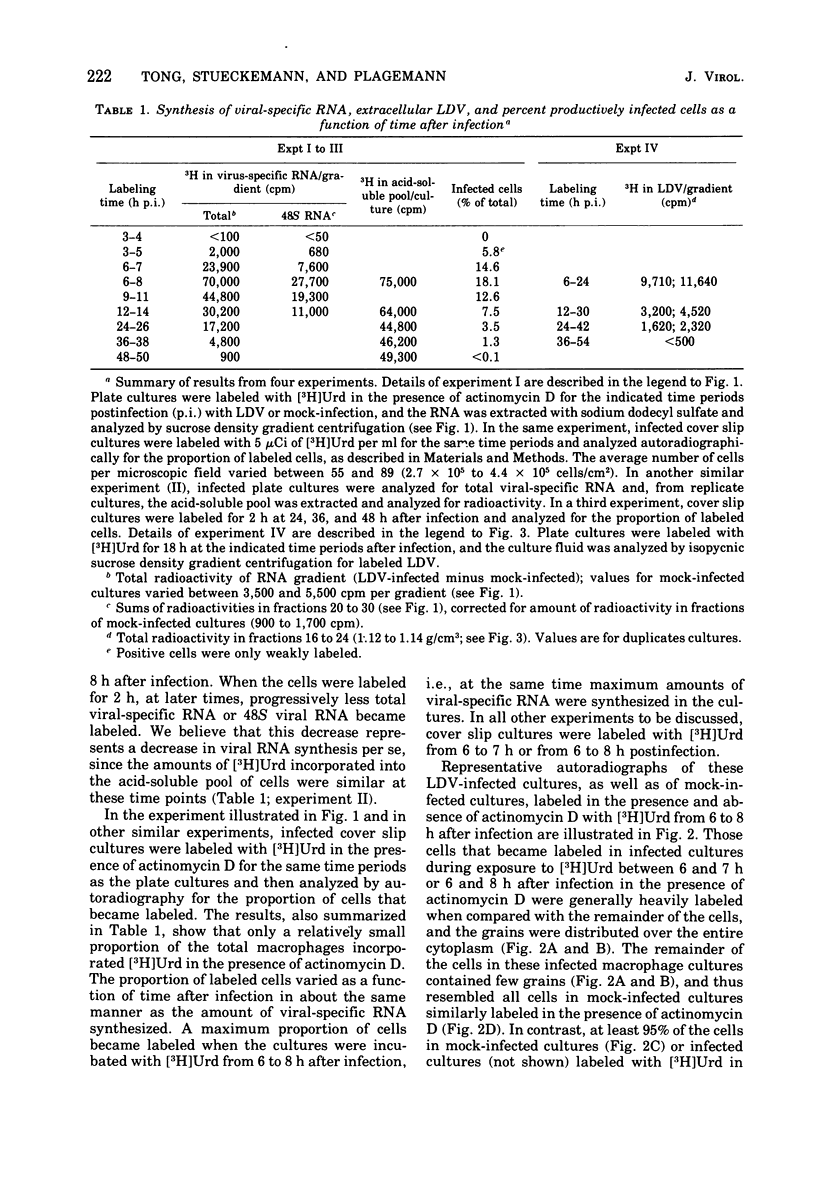
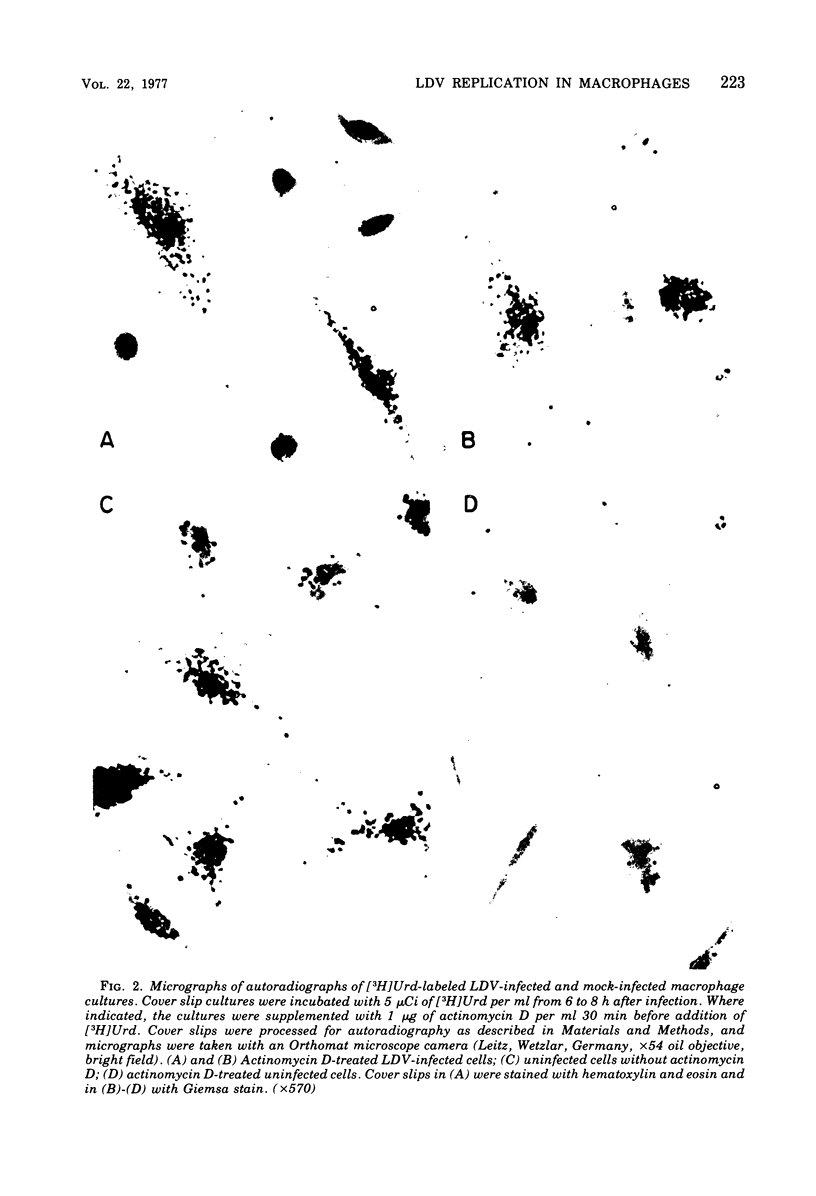
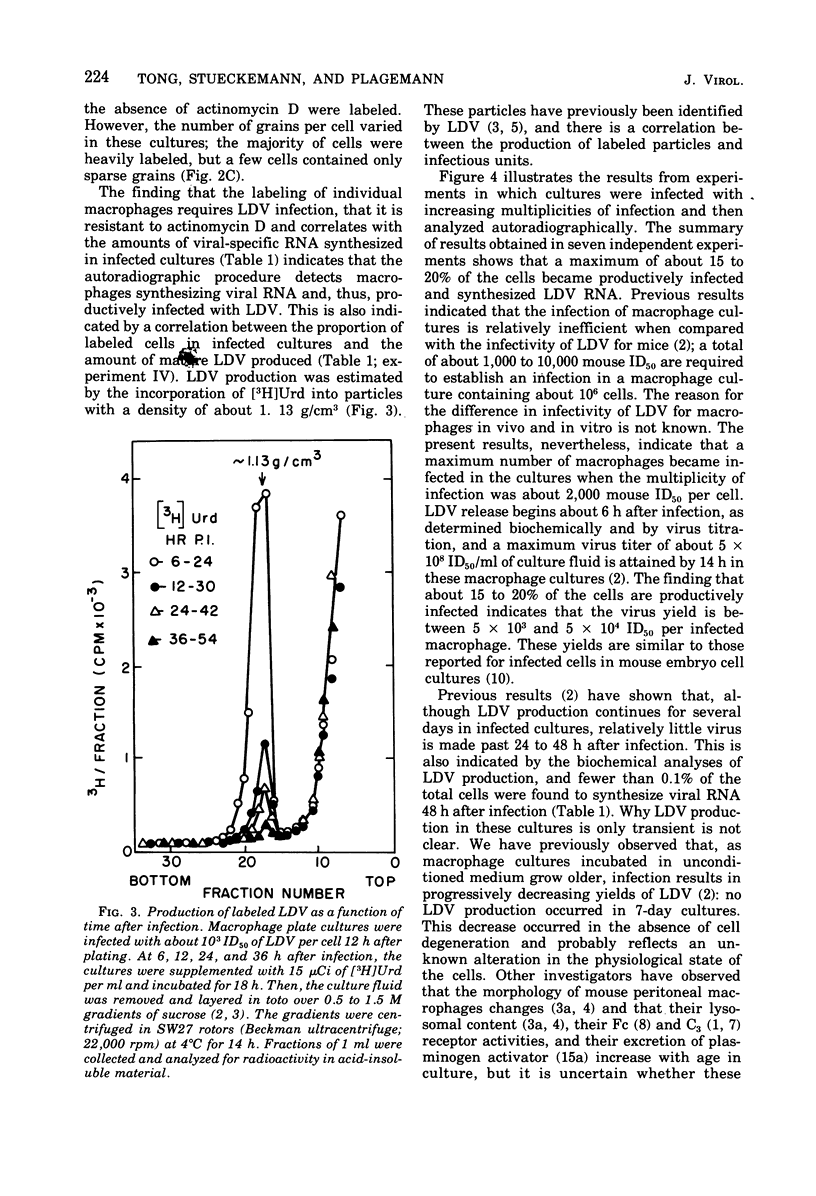
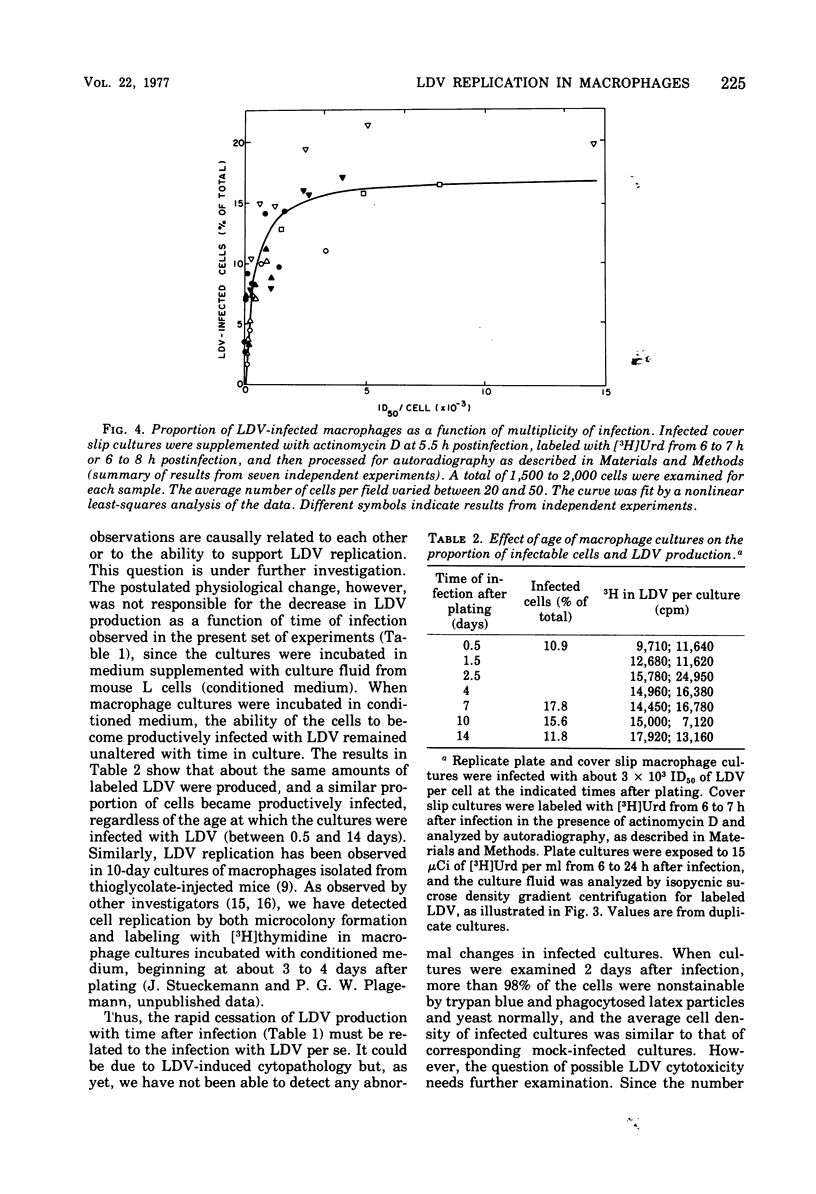
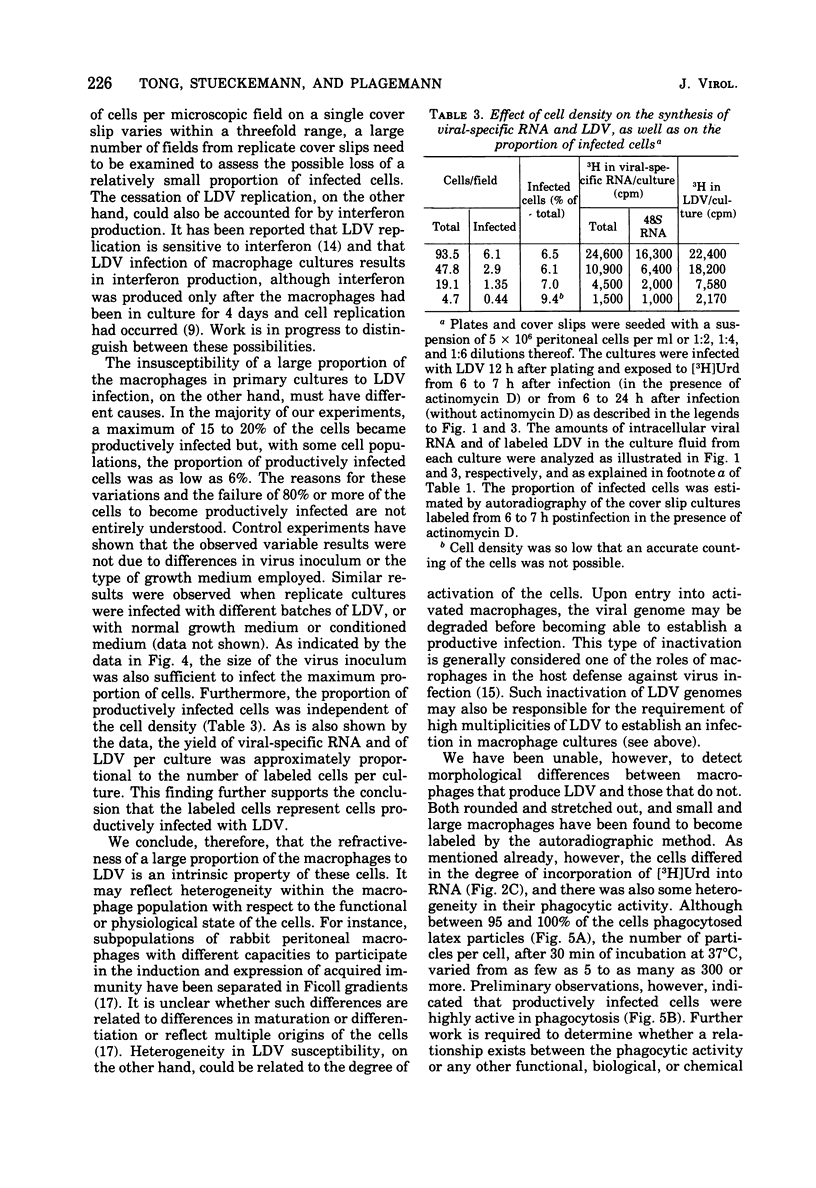
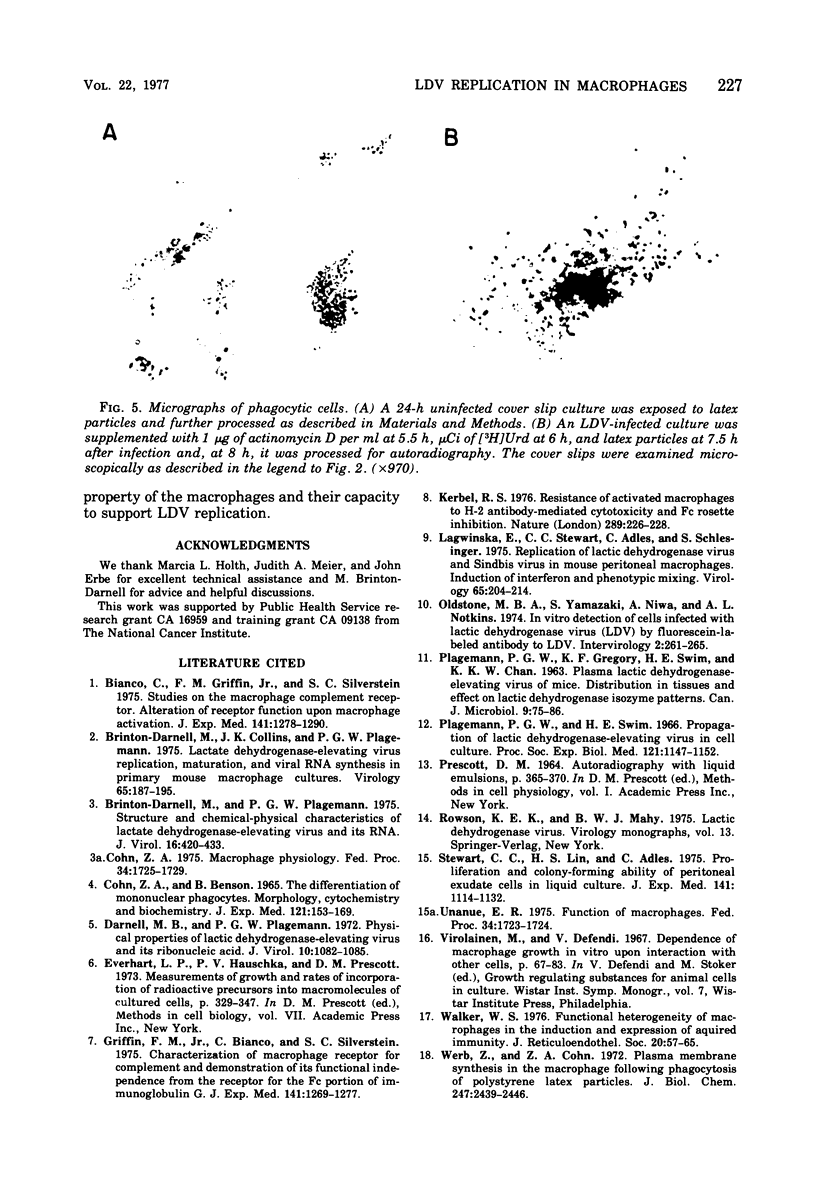
Images in this article
Selected References
These references are in PubMed. This may not be the complete list of references from this article.
- Bianco C., Griffin F. M., Jr, Silverstein S. C. Studies of the macrophage complement receptor. Alteration of receptor function upon macrophage activation. J Exp Med. 1975 Jun 1;141(6):1278–1290. doi: 10.1084/jem.141.6.1278. [DOI] [PMC free article] [PubMed] [Google Scholar]
- Brinton-Darnell M., Collins J. K., Plagemann P. G. Lactate dehydrogenase-elevating virus replication, maturation, and viral RNA synthesis in primary mouse macrophage cultures. Virology. 1975 May;65(1):187–195. doi: 10.1016/0042-6822(75)90019-7. [DOI] [PubMed] [Google Scholar]
- Brinton-Darnell M., Plagemann P. G. Structure and chemical-physical characteristics of lactate dehydrogenase-elevating virus and its RNA. J Virol. 1975 Aug;16(2):420–433. doi: 10.1128/jvi.16.2.420-433.1975. [DOI] [PMC free article] [PubMed] [Google Scholar]
- COHN Z. A., BENSON B. THE DIFFERENTIATION OF MONONUCLEAR PHAGOCYTES. MORPHOLOGY, CYTOCHEMISTRY, AND BIOCHEMISTRY. J Exp Med. 1965 Jan 1;121:153–170. doi: 10.1084/jem.121.1.153. [DOI] [PMC free article] [PubMed] [Google Scholar]
- Cohn Z. A. Macrophage physiology. Fed Proc. 1975 Jul;34(8):1725–1729. [PubMed] [Google Scholar]
- Darnell M. B., Plagemann P. G. Physical properties of lactic dehydrogenase-elevating virus and its ribonucleic acid. J Virol. 1972 Nov;10(5):1082–1085. doi: 10.1128/jvi.10.5.1082-1085.1972. [DOI] [PMC free article] [PubMed] [Google Scholar]
- Everhart L. P., Hauschka P. V., Prescott D. M. Measurement of growth and rates of incorporation of radioactive precursors into macromolecules of cultured cells. Methods Cell Biol. 1973;7:329–347. doi: 10.1016/s0091-679x(08)61785-9. [DOI] [PubMed] [Google Scholar]
- Griffin F. M., Jr, Bianco C., Silverstein S. C. Characterization of the macrophage receptro for complement and demonstration of its functional independence from the receptor for the Fc portion of immunoglobulin G. J Exp Med. 1975 Jun 1;141(6):1269–1277. doi: 10.1084/jem.141.6.1269. [DOI] [PMC free article] [PubMed] [Google Scholar]
- Kerbel R. S. Resistance of activated macrophages to H-2 antibody-mediated cytotoxicity and Fc rosette inhibition. Nature. 1976 Jan 22;259(5540):226–228. doi: 10.1038/259226a0. [DOI] [PubMed] [Google Scholar]
- Lagwinska E., Stewart C. C., Adles C., Schlesinger S. Replication of lactic dehydrogenase virus and Sindbis virus in mouse peritoneal macrophages. Induction of interferon and phenotypic mixing. Virology. 1975 May;65(1):204–214. doi: 10.1016/0042-6822(75)90021-5. [DOI] [PubMed] [Google Scholar]
- Oldstone M. B., Yamazaki S., Niwa A., Notkins A. L. In vitro detection of cells infected with lactic dehydrogenase virus (LDV) by fluorescein-labeled antibody to LDV. Intervirology. 1974;2(4):261–265. doi: 10.1159/000149431. [DOI] [PubMed] [Google Scholar]
- Plagemann P. G., Swim H. E. Propagation of lactic dehydrogenase-elevating virus in cell culture. Proc Soc Exp Biol Med. 1966 Apr;121(4):1147–1152. doi: 10.3181/00379727-121-30991. [DOI] [PubMed] [Google Scholar]
- Stewart C. C., Lin H. S., Adles C. Proliferation and colony-forming ability of peritoneal exudate cells in liquid culture. J Exp Med. 1975 May 1;141(5):1114–1132. doi: 10.1084/jem.141.5.1114. [DOI] [PMC free article] [PubMed] [Google Scholar]
- Unanue E. R. Function of macrophages. Introduction. Fed Proc. 1975 Jul;34(8):1723–1723. [PubMed] [Google Scholar]
- Walker W. S. Functional heterogeneity of macrophages in the induction and expression of acquired immunity. J Reticuloendothel Soc. 1976 Jul;20(1):57–65. [PubMed] [Google Scholar]
- Werb Z., Cohn Z. A. Plasma membrane synthesis in the macrophage following phagocytosis of polystyrene latex particles. J Biol Chem. 1972 Apr 25;247(8):2439–2446. [PubMed] [Google Scholar]



